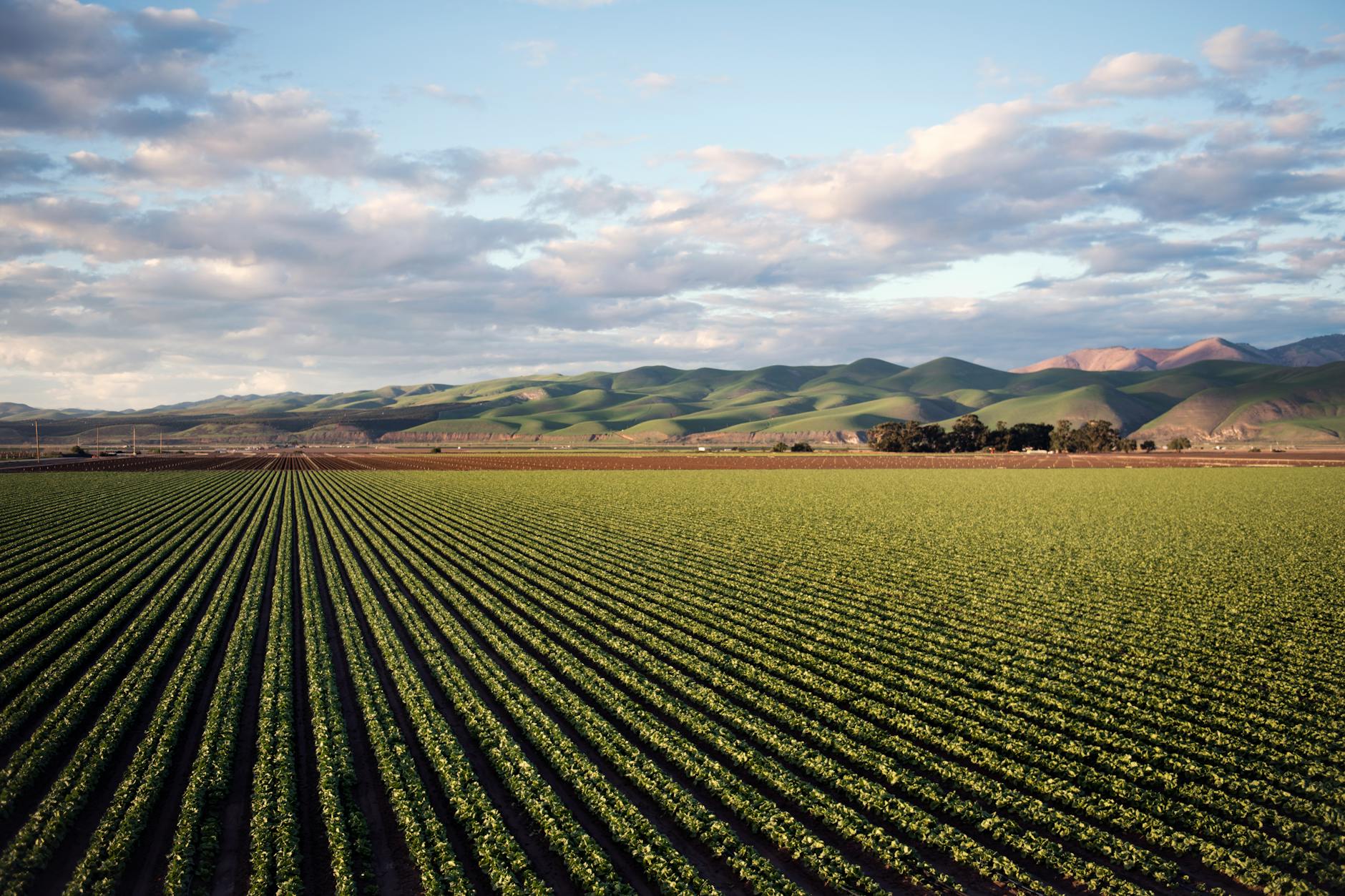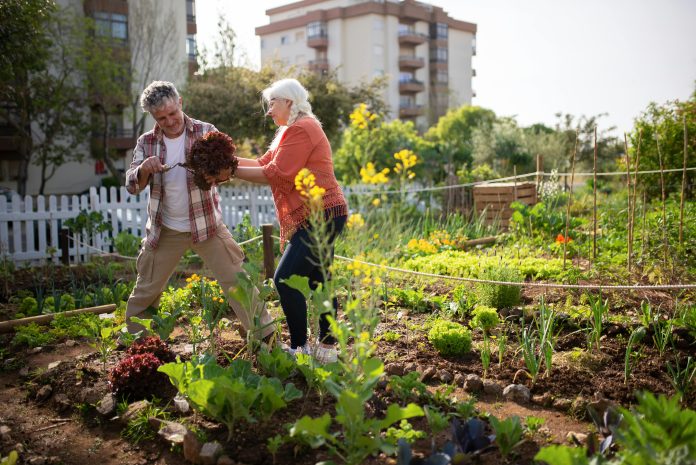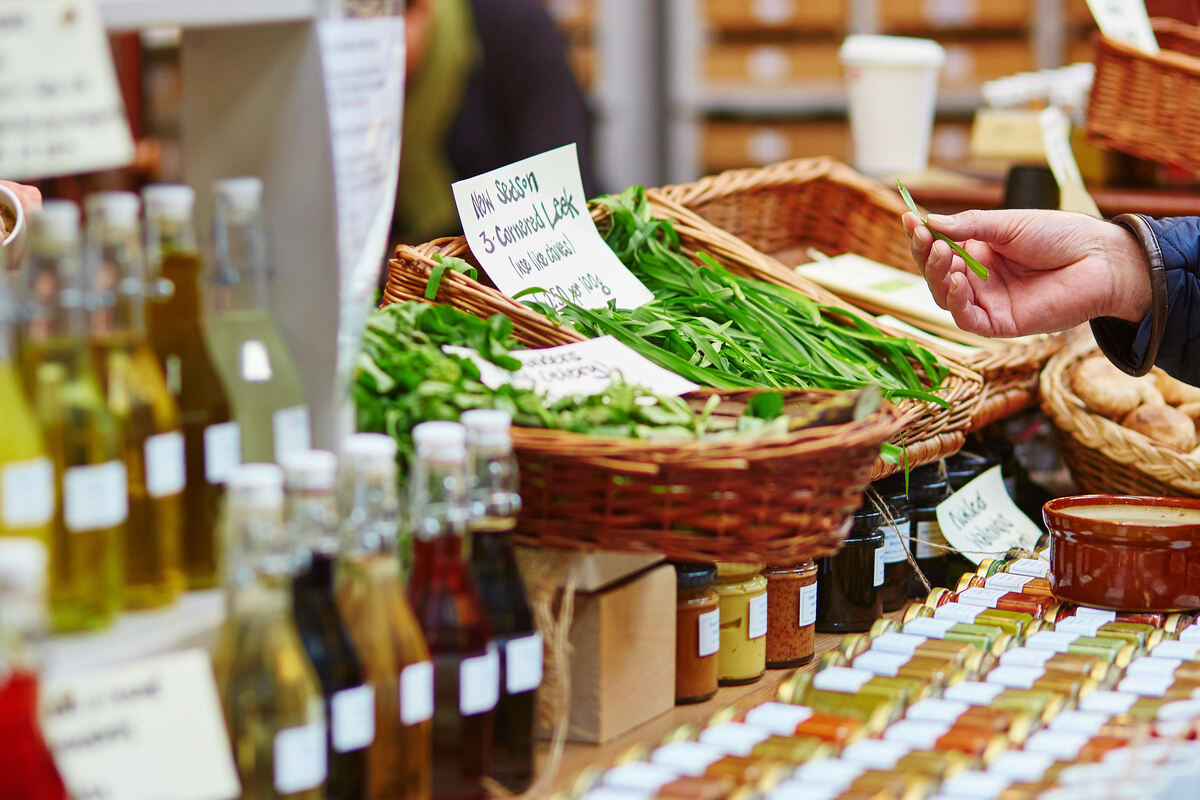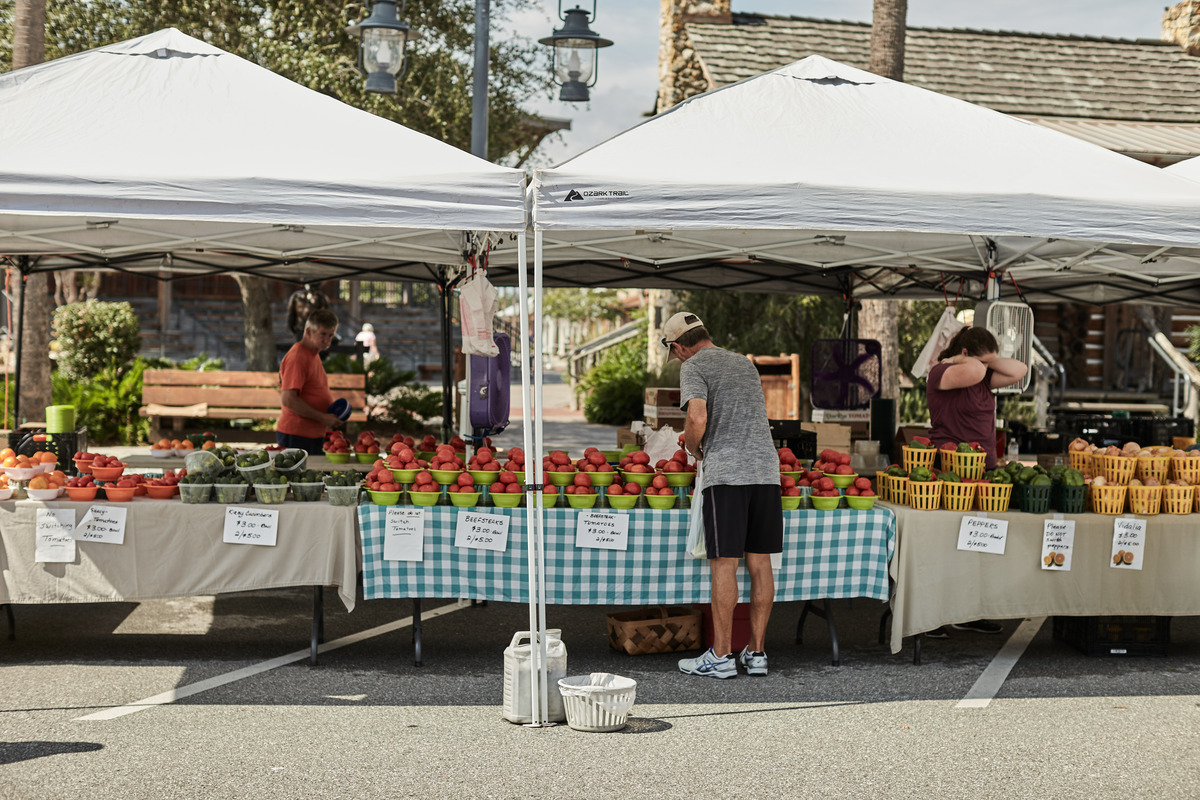The global environmental crisis, marked by climate change, soil degradation, water scarcity, and biodiversity loss, has placed tremendous pressure on the way we produce food. Industrial agriculture, with its reliance on monoculture, chemical inputs, and intensive land use, has contributed significantly to these issues. As we look to the future, regenerative agriculture offers a transformative solution that goes beyond simply sustaining the land—it aims to restore and revitalize ecosystems.
Regenerative agriculture is more than just a set of farming techniques; it is a holistic approach that focuses on improving the health of the entire ecosystem—soil, water, biodiversity, and people. It works by restoring soil health, increasing biodiversity, improving water cycles, and enhancing the resilience of agricultural systems to climate change.
Unlike conventional farming, which often depletes the land, regenerative practices aim to enhance the natural processes that sustain life on Earth. This philosophy is not new, but its resurgence has gained attention as the need for climate solutions and sustainable food systems becomes more urgent.
In this article, we will dive deeper into the key principles of regenerative agriculture, exploring how they contribute to healthier farms, communities, and ecosystems. We’ll also look at how these principles offer a path to healing the planet, creating long-term resilience for both farmers and the food systems we all depend on.
1. Building Soil Health: The Foundation of Regenerative Agriculture

Healthy soil is the cornerstone of any successful agricultural system, and in regenerative agriculture, soil health is the primary focus. While conventional agriculture often views soil as merely a medium for growing plants, regenerative agriculture recognizes that soil is a living ecosystem — home to billions of microorganisms, insects, fungi, and other organisms that work together to create fertile conditions for plants to thrive.
Over the last century, soil has been significantly degraded due to practices like over-tilling, excessive use of synthetic fertilizers, and deforestation. According to the United Nations, 33% of the Earth’s soils are already degraded, with some estimates predicting we have fewer than 60 years of farming left if soil degradation continues at its current rate. Regenerative agriculture is one of the most promising solutions to reverse this trend.
Practices for Building Soil Health
No-Till or Reduced Tillage: Tilling the soil disrupts its structure and the ecosystems within it, which leads to erosion, loss of soil carbon, and a decline in microbial diversity. In regenerative agriculture, the goal is to minimize or eliminate tilling to protect the soil’s integrity. No-till practices help retain organic matter, improve water retention, and reduce erosion, leading to healthier, more resilient soils.
Cover Cropping: One of the most effective tools for improving soil health is planting cover crops, such as legumes or grasses, during times when cash crops are not being grown. These plants protect the soil from erosion, suppress weeds, and improve soil structure. More importantly, they help increase organic matter and nutrients in the soil by fixing nitrogen and carbon from the atmosphere.
Composting and Organic Matter: Composting is a regenerative practice that recycles organic waste into a nutrient-rich amendment for soil. Adding compost improves soil structure, water retention, and microbial activity, all of which contribute to long-term fertility. In contrast to synthetic fertilizers, which can deplete soil over time, compost enriches the soil ecosystem naturally.
Carbon Sequestration: Healthy soils have the ability to sequester carbon, meaning they can capture and store carbon dioxide from the atmosphere. This not only mitigates climate change but also increases the fertility of the soil. Regenerative practices like cover cropping, no-till farming, and composting can significantly boost a soil’s carbon-sequestration capacity, turning farms into carbon sinks rather than contributors to greenhouse gas emissions.
Wren projects reduce and remove CO₂ by planting trees, promoting sustainable agriculture, protecting rainforest, and more.
By focusing on building soil health, regenerative agriculture offers a sustainable, long-term solution to the problems of soil erosion, loss of fertility, and declining yields. It restores the vitality of the land and creates a foundation for healthier ecosystems.
2. Crop Diversity: Enhancing Resilience and Productivity

Conventional agriculture often relies on monoculture, the practice of growing a single crop over a large area year after year. While monoculture may increase short-term yields, it leads to significant ecological imbalances. Over time, it depletes soil nutrients, encourages the spread of pests and diseases, and increases the need for chemical inputs such as fertilizers and pesticides.
In contrast, regenerative agriculture champions crop diversity, which mimics the natural ecosystems where multiple species grow together. Crop diversity fosters a more resilient system, enhances soil health, and reduces the need for external inputs. This principle acknowledges that a diverse farm is a healthy farm—one that can better adapt to environmental stresses like climate change, pests, and disease outbreaks.
How Crop Diversity Works in Practice
Polyculture: Unlike monoculture, polyculture involves growing multiple crops in the same space. For example, a regenerative farmer might plant legumes alongside grains, with the legumes fixing nitrogen in the soil and the grains taking advantage of the improved fertility. Polyculture mimics natural ecosystems, where a variety of plants co-exist and support each other. This diversity reduces the risk of pests and diseases that thrive in monocultures, as a more varied environment disrupts pest life cycles.
Crop Rotation: Rotating crops from season to season helps prevent the depletion of specific soil nutrients and reduces pest and disease pressures. For example, planting nitrogen-fixing legumes one season and nitrogen-hungry corn the next prevents the soil from becoming imbalanced. Each crop contributes differently to the soil, keeping it healthy and reducing the need for chemical fertilizers.
Agroforestry: A more advanced practice is agroforestry, which integrates trees or shrubs into agricultural landscapes. This approach creates a more diverse and stable ecosystem, as trees provide shade, windbreaks, and habitat for wildlife, while also enhancing soil fertility through leaf litter and root systems. Trees also capture carbon, contribute to water retention, and protect the land from erosion.
Crop diversity, therefore, enhances resilience not just in the face of climate change but also in terms of economic stability. Diverse farms can offer multiple products, providing farmers with a broader range of income sources and reducing their vulnerability to crop failures or market fluctuations.
3. Integrating Livestock: Harmonizing Plants and Animals

Another key principle of regenerative agriculture is integrating livestock into the farming system. In industrial agriculture, plant and animal farming are often treated as separate industries, which can lead to the overuse of synthetic fertilizers and the mismanagement of waste. Regenerative agriculture seeks to reintegrate animals into crop production in a way that benefits the entire ecosystem.
The concept behind integrating livestock is simple: animals and plants have evolved to exist together, each contributing to the health of the other. When managed correctly, livestock can help enhance soil health, increase biodiversity, and reduce the need for external inputs like chemical fertilizers. This is often achieved through practices like managed grazing, where livestock are moved frequently to prevent overgrazing and promote pasture regeneration.
The Benefits of Integrating Livestock
Nutrient Cycling: Animals play a critical role in nutrient cycling by converting plant matter into organic manure, which enriches the soil with essential nutrients like nitrogen, phosphorus, and potassium. This natural fertilizer helps improve soil structure, water retention, and fertility, reducing the need for synthetic fertilizers.
Improved Pasture Management: Rotational or holistic grazing is a method that mimics the natural grazing patterns of wild herbivores. Livestock are moved frequently across different sections of pasture, allowing grasses to recover and regrow. This not only prevents overgrazing but also encourages deeper root growth, which helps sequester carbon, improves water infiltration, and reduces soil erosion.
Biodiversity Enhancement: Livestock integration supports a diverse ecosystem by creating habitats for a variety of plants, insects, and birds. Grazing animals help maintain plant diversity by preventing certain species from becoming dominant, which promotes a balance that can support more wildlife.
Reduced Dependency on External Inputs: By using livestock to manage weeds and fertilize crops naturally, farmers can reduce their dependence on synthetic inputs like herbicides, pesticides, and fertilizers. This not only lowers costs but also lessens the environmental impact of farming.
Integrating livestock into regenerative systems ensures that farms function more like natural ecosystems, where plants and animals co-exist in mutually beneficial relationships. The result is a more productive, resilient, and ecologically sound farming system.
4. Reducing Chemical Inputs: A Focus on Natural Solutions

One of the most pressing concerns with conventional agriculture is the heavy reliance on synthetic chemicals—fertilizers, pesticides, herbicides, and fungicides—that degrade soil health, pollute waterways, and harm biodiversity. In regenerative agriculture, the goal is to minimize or eliminate the use of chemical inputs, instead relying on natural processes to manage soil fertility and control pests.
By reducing chemical inputs, regenerative farming not only protects the environment but also promotes healthier ecosystems that are more self-sustaining. Natural processes, such as biological pest control, nutrient cycling, and natural soil fertility, replace the need for external inputs.
Strategies for Reducing Chemical Inputs
Biological Pest Control: Rather than using pesticides, regenerative farmers focus on attracting beneficial insects and natural predators to control pests. This can include planting specific flowers or hedgerows to provide habitat for beneficial insects like ladybugs, which naturally feed on crop-damaging pests. By creating a balanced ecosystem, pest populations are kept in check without harmful chemicals.
Composting and Natural Fertilizers: Instead of synthetic fertilizers, regenerative farms rely on compost, manure, and green manure to provide the nutrients crops need. Composting not only recycles organic waste but also creates a nutrient-rich material that improves soil health, enhances water retention, and stimulates microbial activity. Cover crops are another natural source of fertility, as they fix nitrogen in the soil and build organic matter.
Weed Management: To avoid the use of herbicides, regenerative farmers use practices like mulching, cover cropping, and crop rotation to suppress weeds naturally. Mulching involves covering the soil with organic material, which prevents weed growth and retains soil moisture. Similarly, cover crops can outcompete weeds for sunlight and nutrients, reducing their spread.
Reducing chemical inputs not only lowers costs for farmers but also protects the surrounding environment. It preserves water quality, promotes biodiversity, and enhances the overall resilience of the farming system.
Regenerative Agriculture: A Future of Resilience and Renewal
In the face of global environmental challenges, regenerative agriculture stands out as a promising solution that can restore ecosystems, combat climate change, and create more resilient food systems. By focusing on building soil health, promoting crop diversity, integrating livestock, and reducing chemical inputs, regenerative farming practices offer a path forward that benefits both people and the planet.
Beyond the environmental and economic benefits, regenerative agriculture represents a shift in mindset. It challenges the notion that farming and nature must be at odds, showing instead that they can work in harmony to create a more sustainable and abundant future.
As more farmers, communities, and consumers embrace this approach, we have the opportunity to transform the way we grow food—not just for our generation, but for generations to come. Regenerative agriculture is not simply a method of farming; it is a movement toward healing the Earth, creating a resilient, vibrant world for all.












